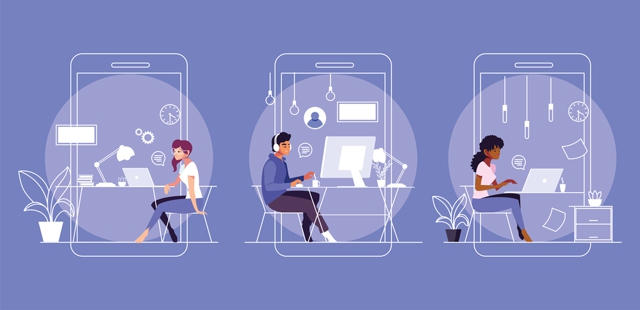Around the world, our work environments have been disrupted by the stay-at-home measures implemented to combat the spread of COVID-19.
Remote work has been gaining ground for some time, but the pandemic brought about large-scale enforcement.
This new social dynamic is challenging the ideas behind traditional workplaces and their culture, but with the majority of the global workforce house-bound, there’s a new set of challenges companies need to confront.
From an operational standpoint, a successful work culture significantly increases productivity and engagement. 2020 is a year of radical changes, so it might just be the perfect opportunity to implement novel approaches toward workers’ general well-being.
How should companies shape work culture during these uncertain times?
Work culture: the good, the bad and the ugly
Work culture varies from country to country and from company to company; after all, it directly originates from specific societal and corporate values.
The average worker in Japan probably won’t share the same perception of his work-life as a person in Denmark with the same role.
However, there’s a correlation between four variables that contribute to people’s general happiness: physical, emotional, social, and financial well-being.
When these variables meet in a balanced way, workers tend to be happier with their jobs. Increased efficiency, creativity, and engagement are many of the benefits companies that employ well-thought-out culture strategies can enjoy.
On the other hand, harmful environments correlate directly with increased levels of stress, which leads to an increase in voluntary turnover by 50% among workers. Employees with higher stressing jobs tend to visit doctors 27% more than their peers in less stressing positions.
In pre-COVID times, many companies were already struggling to implement satisfactory systems properly. These issues are not solved by installing a ping pong table, but rather by setting strategies that stimulate different areas of an employee’s life, inside and outside of work.
In the context of the current crisis, it’s vital to assess all these variables and how they correlate to specific worker’s conditions.
Physical well-being
In 2016, a total of 137.3 million working days were lost because of employees getting sick or injured. Beyond the economic dimension, good physical health increases a worker’s concentration and energy levels.
However, directly promoting employees’ physical health can be challenging, especially considering the lockdown measures still in place.
Some companies work around this by giving employees smart bands or rings to track health and encourage them to dedicate time to physical activity.
For example, the founder of Patagonia, Yvon Chouinard, lets employees surf during work hours. “I don’t care when you work as long as the job gets done,” he says.
Another important aspect of physical well-being is general healthcare. While not every company counts with the resources to provide coverage to every employee, it’s the details that matter. For example, Apple sent COVID-19 testing kits to employees working remotely.
Emotional and social well-being
Not only are we facing an economic crisis – but a mental health one as well. Lockdowns and stay-at-home measures have brought an anxiety and loneliness epidemic too.
These issues correlate directly with an employee’s social well-being as many gatherings and mass-events might be put on hold until a vaccine is available.
External conditions are out of companies’ hands, but there are still things to be done. They can promote non-work-related events among co-workers to make sure they are still socializing.
Ultimately, companies should remember that the most important thing is that their employees feel cared for.
Financial well-being
The lack of financial incentives or fair wages can increase stress levels in employees, even more so as we face an economic recession.
Navigating this issue becomes complex, as companies battle shrinking revenues.
However, financial well-being goes beyond increased wages.
During these challenging times, companies could offer support in the form of training or seminars in areas such as saving and financial literacy, or help employees who qualify for different government aid programs.
A work culture model to meet the crisis
Regarding everyday activities, some companies experienced a more straightforward transition between lockdowns and normal life because of their management systems.
Results Only Work Environment (ROWE) is a management system implemented by companies that pay employees based on results instead of hours.
While no system goes without challenges, it’s interesting to note that companies with ROWE didn’t see such a big shock by switching to remote work as they already had the option in place.
As businesses prepare to reopen their offices, it’s key to maintain an employee-centric approach. Being perspective to the needs of each team member goes a long way – even if it means implementing work-from-home for longer.
The current crisis is the best opportunity to be attentive and bring the focus back to work culture and shape it in accordance with a company’s values and its team’s needs.
Disclosure: This story is brought to you through an ESPACIO portfolio company.
Navigating the invisible landscapes of remote working with Running Remote












